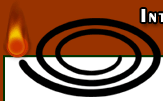Ecotoxicology - Pesticide Definitions
What is a pesticide?
A literal definition of a pesticide would be "a killer of pests". In practice pesticides are no longer aimed exclusively at killing the pests they are used to control and the term has acquired a rather wider meaning such as "the chemical tools used to manage all kinds of pests" or in the US it's more official definition is "any substance used for controlling, preventing destroying, repelling or mitigating any pest" (all definitions Ware 1991). Hence pesticides include not only those chemicals which kill the pest they are used against but also those such as insect chemosterilants or plant and insect growth regulators which control pest populations without necessarily, physically, killing the pests they come into contact with.
Pesticides have been divided into many different classes. Firstly, according to the target organism that they control, so insect-icides kill (or control) insects, rodent-icides control rodents etc. The -icide suffix has been widely used in the past, as shown in Table 1, but relatively few of these terms are in common use today. Secondly, pesticides can be classified according to their mode of action, that is the way in which they act on the pest population, e.g. attractants, repellents, chemosterilants etc.
Finally, the definition of a pesticide has been widened once again to: "pesticides are used by man as intentional additions to his environment in order to improve environmental quality for himself, his animals or his plants" (Ware 1991). This definition allows the inclusion of 2 new classes of treatment. Firstly those such as plant growth regulators, which are not only used as herbicideherbicides to control weeds, but also to control directly the growth of the crop and hence improve its success. For instance, they are used to reduce the growth of cereals so that they do not become toot all and prone to 'lodging' before harvest. Secondly, microbial pesticides which are not based on a chemical but on bacteria, fungi, nematodes and viruses which attack the pest.
Table 1
Classes of pesticide according to :
A. the target organism and
B. pesticide mode of action.
After Ware (1991).
| CLASS |
FUNCTION |
|
A. By Target Organism
|
| acaricide |
kills/controls mites |
| algicide |
kills/controls algae |
| avicide |
kills/controls or repels birds |
| bactericide |
kills/controls bacteria |
| fungicide |
kills/controls fungi |
| herbicide |
kills/controls plants |
| insecticide |
kills/controls insects |
| larvicide |
kills/controls larvae (usually mosquitoes) |
| miticide |
kills/controls mites |
| molluscicide |
kills/controls snails & slugs. May include oysters, clams, & mussels |
| nematicide |
kills/controls nematodes |
| ovicide |
kills/controls eggs |
| pediculicide |
kills/controls lice |
| piscicide |
kills/controls fish |
| predicide |
kills/controls predators (usually such as coyotes) |
| rodenticide |
kills/controls rodents |
| silvicide |
kills/controls trees & brush |
| slimicide |
kills/controls slime |
| termiticide |
kills/controls termites |
|
B. By Mode of Action - by affect on pest
|
| attractants/pheromones |
Attract animals, especially insects usually into traps. Often sexual pheromones. |
| chemosterilants |
Sterilise insects or vertebrates (birds, rodents). Usually sterilise males. |
| defoliants |
Remove leaves. |
| desiccants |
Speed drying of plants. Used not only to kill weeds but also as pre-harvest desiccants to make harvesting easier. |
| disinfectants |
Kill or inactivate harmful micro-organisms |
| feeding stimulants |
Cause insects to feed more vigorously |
| growth regulators |
Stimulate or retard plant or insect growth. Natural or artificial hormones used not only to kill weed species but also to protect crops such as cereals from lodging. |
| repellents |
Repel insects, mites, ticks or pest vertebrates (dogs, rabbits, deer, birds). |
| B. By Mode of Action - by timing of application |
| curative (fungicides) |
applied to the plant after initial infection. |
| eradicant (fungicides) |
applied when disease symptoms have already become visible, often to prevent the spread of disease. |
| protectant (fungicides) |
applied to the plant surface before infection. |
| pre-plant or pre-sowing (herbicides) |
applied before crop is sown or planted |
| pre-emergence (herbicides) |
applied before the crop has germinated |
| post-emergence(herbicides) |
applied after the crop has germinated |
B. By Mode of Action - by selectivity
the degree to which a pesticide discriminates between target and non-target organisms. |
| selective |
A selective pesticide effects a very narrow range of species other than the target pest or may be. The chemical itself may be selective in that it does not affect non-target species or it may be used selectively in such a way that non-target species do not come into contact with it. |
| non-selective |
a non-selective pesticide kills a very wide range of plants, insects, fungi etc. |
| B. By Mode of Action - by site of interaction with pest |
| systemic |
the pesticide is absorbed by the pest and moves around within the pest system to reach parts of the pest remote from the point of application |
| contact |
contact pesticides directly affect the parts of the plant, insect, fungus etc to which they are applied. They cause localised damage to the plant or animal tissue on contact. |
References
Barlow, F (1985) Chemistry and formulation. In: Pesticide Application: Principles and Practice. Ed: P T Haskell. Oxford Science Publications: Oxford. pp 1-34.
Dent, D R (1995) Integrated Pest Management. Chapman & Hall: London, Glasgow, Weinheim, New York, Todyo, Melbourne, Madras.
Rombke, J & J M Moltmann (1995) Applied Ecotoxicology. Lewis Publishers: Boca Raton, New York, London, Tokyo.
Ware, G W (1991) Fundamentals of Pesticides. A self-instruction guide. Thomsom Publications: Fresno USA.











